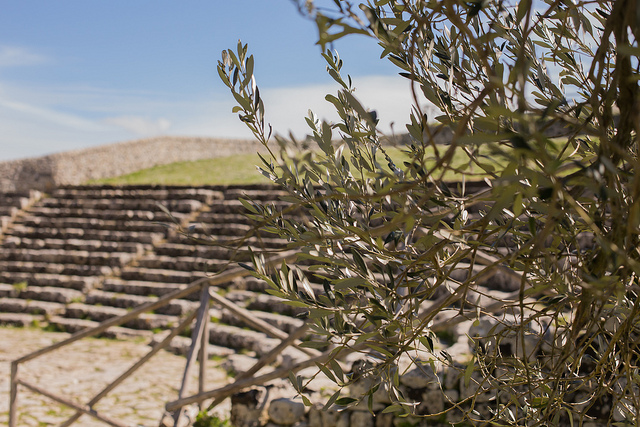 All photos are about telling stories. From a beautiful lily in bloom to a shell exploding as it careens through a pock-marked wall in a war-torn suburb, they're about conveying a narrative. Much like words, that are also used to express an opinion or tell a tale, sometimes they are about truth and sometimes they are about fantasy. It doesn't matter which type of story a photographer chooses to tell with her or his images, the important factor is that the audience knows which type of story they're looking at: a real one, or a constructed one.
All photos are about telling stories. From a beautiful lily in bloom to a shell exploding as it careens through a pock-marked wall in a war-torn suburb, they're about conveying a narrative. Much like words, that are also used to express an opinion or tell a tale, sometimes they are about truth and sometimes they are about fantasy. It doesn't matter which type of story a photographer chooses to tell with her or his images, the important factor is that the audience knows which type of story they're looking at: a real one, or a constructed one.
This element of truthfulness has been a matter of hot debate in photojournalistic circles over the past two weeks. It started when Paul Hansen was awarded the World Press Photo of the Year prize for his image of two young boys being carried to their funeral in Gaza. It's a raw and emotive photograph, overwhelmingly blue and dusty in tone. You can feel the cold numbness of heartache seeping through the screen when you look at it. And that, for many people, was the problem with the winning image. This chilled, depressed feeling had been processed into the image specifically for its entry into the competition in order to evoke an emotion in its audience. The tone of the image, the feeling that you get when you compare the competition version with the press version is quite different. Rather than acting as a record of events, it had been transformed into a work of art.
This is problematic for the inegrity of the competition. If it's a press photo competition, should the images not be as they were submitted to publications? Shouldn't they be about assessing the photos used to report the news over the past year and settle on which one tells the story best? If we are content to see images that have been manipulated in post-production in order to produce a response win the industry's major prize, are we also content to see these sorts of images tell the story of the news?
News reporting isn't about art and isn't about winning competitions. First and foremost, it is about telling the stories of those unable to tell them themselves, of keeping the world informed, of bringing light to situations that might otherwise remain festering pits of darkness. It isn't pretty and it is often thankless, but it is vital.
Then comes the Paolo Pellegrin situation, which also arose from his entry into the World Press Photo competition. This is a degree messier than the Hansen situation. His entry into the documentary category was of an ex-Marine sniper in The Crescent, a dodgy (putting it mildly) area of Rochester, New York. Except that the caption on the image was outed by Michael Shaw of BagNewsNotes as not being entirely accurate. Shane Keller, the subject of the image, claims that although he was in the military he was never a sniper; furthermore, the photograph was not taken in the Crescent, but in his basement in an area of Rochester that most definitely isn't the Crescent. Rather than being a proper documentary image that is part of telling the story of the area, it's a bit more posed, maybe even staged, than that. What's more, it looks as if the caption for the image had been lifted from an article in the New York Times published in December 2003.
So we have a situation where a documentary photograph that has been entered into contests and in some cases recognised, isn't necessarily what it claims to be. If this alone isn't disturbing, I'm particularly perturbed by Pellegrin's response to the situation. (And no, I'm not even going to venture into the debate about whether or not BagNewsNotes should have contacted Pellegrin for his comments prior to publication. That's a whole different issue.)
As far as Pellegrin is concerned, this isn't an issue. He might have misunderstood Keller's description of his role in the military and he wasn't sure if the area where the image was taken was indeed The Crescent. But because it tells the story that he aimed to tell, about the deprivation, the gun crime, the drug abuse, and the complicated relationship that exists between them all in Rochester, it doesn't matter. As for the captions, that was a simple mistake.
I'm sorry Signor Pellegrin, but none of those explanations is good enough. You see, if you're a photojournalist or a documentary photographer, I have to be able to trust you. I have to be certain that the stories you are telling through your pictures are accurate. So this means that you need to be certain of whom you're photographing. You need to be certain of where you are taking photographs. And you need to be certain that the captions you attach to them are accurate and indeed your own.
This kind of storytelling isn't about setting up shots to tell the story that you want them to tell; this kind of storytelling is about telling the truth. If I can't trust you here, can I trust you anywhere else?
Photojournalists are the eyes of the world and we rely on their integrity as we rely on their bravery. We have to be certain that the stories that they are telling are the truthful ones, not the fantastical, beautiful, artistic ones. The truth is often ugly: so be it.





